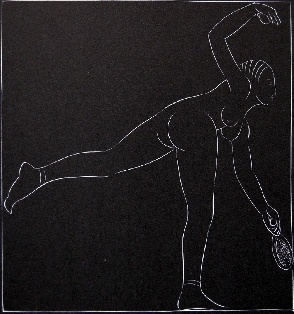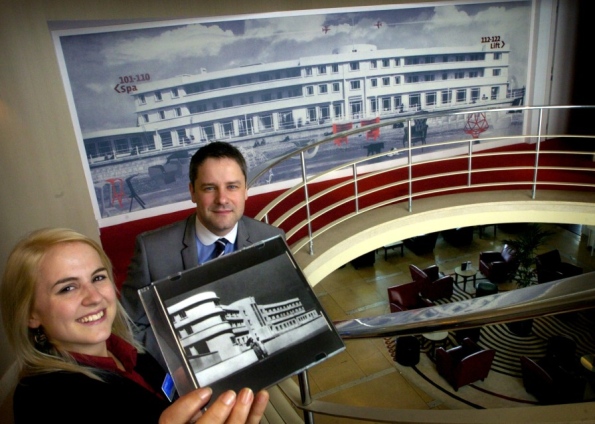Court on Canvas
Home Page / Tennis Home / Tit Bits
Early this year, on 1st January 2015 I spotted a reference to the 1937 Paris Expo on the very interesting Paris Art Deco Society Facebook page. Because I've gone to quite a lot of trouble (see below) to setting this page up linking the Paris Expo to the Midland and curiously Tennis (all great interests of mine) it was very pleasant to receive acknowledgement from the society; not least because I was straying into their territory for a purely personal interest.
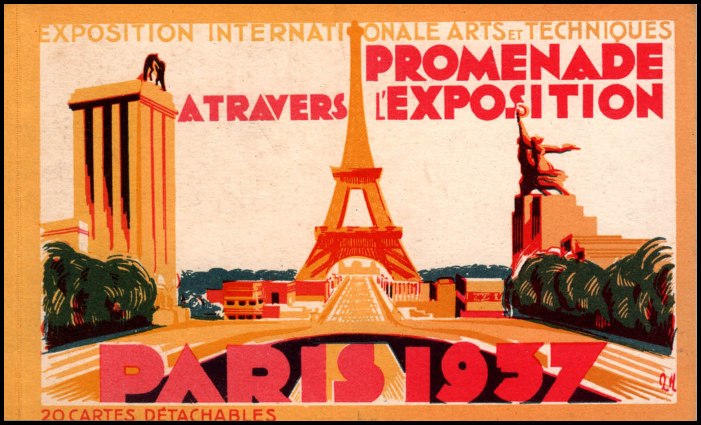
From the advertisements page of 'The Sphere' dated Saturday, 17th July 1937
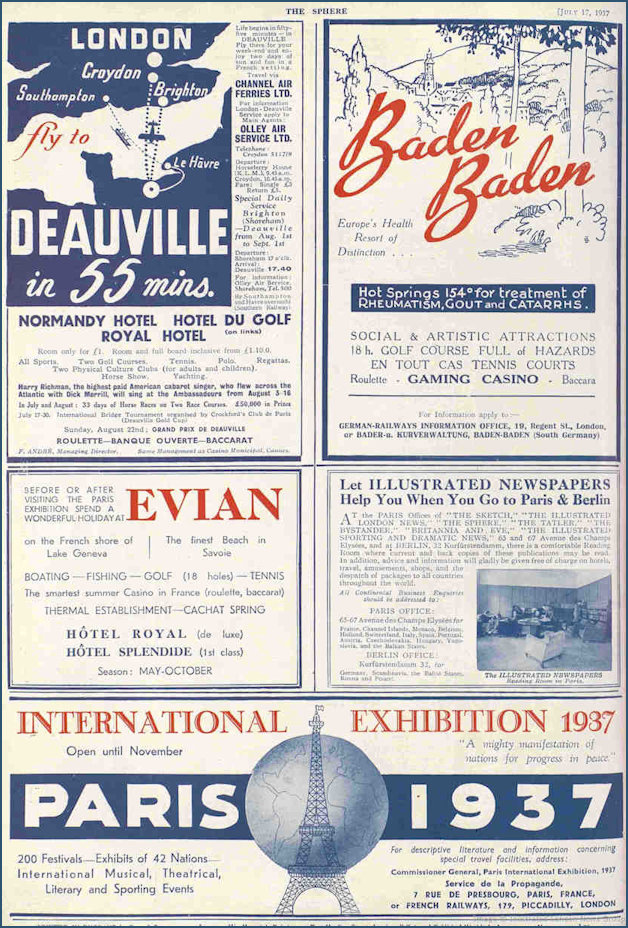
Court on Canvas > Hill, Gill, Ravilious > The Midland Hotel > Paris 1937
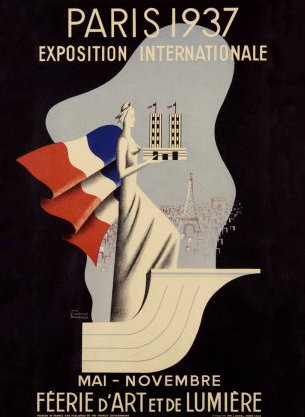
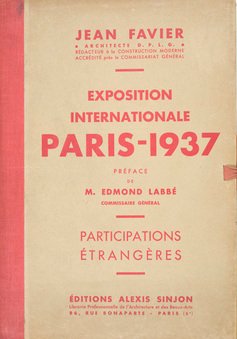
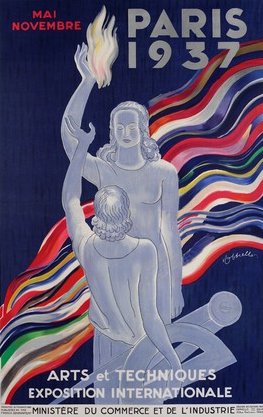
Two of the many and glorious posters advertising the great Paris Exhibition of 1937 either side of the catalogue which advises us that there will be participation by strangers - the Brits! - images courtesy & © of bibliotheques-specialisees.paris.fr
I’m always intrigued the way one thing leads to another, especially when you least expect it to. In this case my love for and interest in tennis led me to two of the Midland’s (male) triumvirate, the two Erics (Gill and Ravilious) and then to the grand Paris Exposition of 1937 (and all three of the triumvirate).
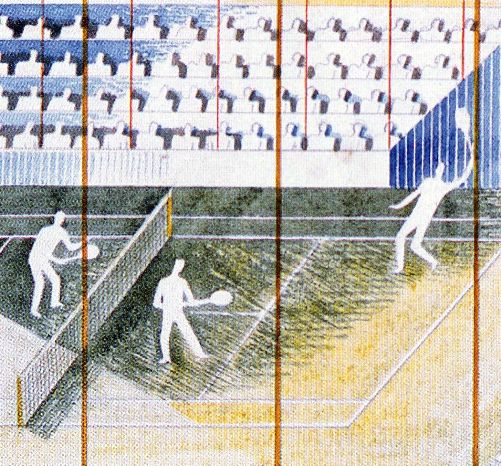
Eric Ravilious - a detail from his British Pavilion preparatory design

Eric Ravilious (ref: Fig 4.29) - Preparatory Design on a Grand Theme for Sport, for the British Pavilion of the Paris International Exhibition of 1937 - featuring from left to right : Tennis, Cricket and Football - (water colour on paper - private collection)
And so to a dilemma – as my web-site has three very distinct areas that this article could go to – where should I place it? In the tennis section with links to the Midland Hotel and/or the Art Deco section or in the Art Deco section with links to the tennis and/or Midland sections? It may be best to decide when I have completed the whole.
I first noticed an advertisement for an exhibition of artwork devoted solely to tennis whilst searching for something on the internet and was more than curious to see whether Birmingham’s Barber Institute of Fine Arts really meant what it said. I have been a tennis fan since the late 1960s and with the exception of the Wimbledon Museum at the AELTC (All England Lawn Tennis Club, formerly the All England Lawn Tennis and Croquet Club) have never seen much tennis art anywhere.
Further reading confirmed that not only was the Institute devoting the entire exhibition to tennis in art but was at 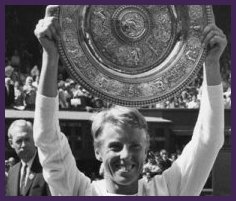 the same time promoting its own strong links with the sport “The University of Birmingham-based gallery is less than half a mile from the birthplace of the modern game – the garden of a villa in suburban Edgbaston, where the sport was first played.” Interestingly, there is a video available on You Tube which thoughtfully covers all the aspects of the exhibition for those, like myself who were unable to attend. The video pans around the exhibition, takes us to the ‘villa’, talks to the present owners about how they feel about owning this piece of tennis history, interviews Ann Jones (three time Grand Slam Champion including Wimbledon in 1969), shows her hitting a few balls on the grass court in the back garden having lost none of her skills and includes an interview with the Athena Calendar girl, Fiona Walker!
the same time promoting its own strong links with the sport “The University of Birmingham-based gallery is less than half a mile from the birthplace of the modern game – the garden of a villa in suburban Edgbaston, where the sport was first played.” Interestingly, there is a video available on You Tube which thoughtfully covers all the aspects of the exhibition for those, like myself who were unable to attend. The video pans around the exhibition, takes us to the ‘villa’, talks to the present owners about how they feel about owning this piece of tennis history, interviews Ann Jones (three time Grand Slam Champion including Wimbledon in 1969), shows her hitting a few balls on the grass court in the back garden having lost none of her skills and includes an interview with the Athena Calendar girl, Fiona Walker!
What really caught my eye when reading one of the web-pages devoted to the exhibition was the list of artists whose work was being highlighted : “Court on Canvas: Tennis in Art features a wide variety of delightful paintings, drawings, photographs, prints and mixed-media works dating from the 1870s through to the 21st century, by artists as diverse as Lavery, Spencer Gore, L S Lowry, Stanley Spencer, Eric Ravilious, Winnie the Pooh illustrator E H Shepard, David Hockney and Tom Phillips. It will even feature the iconic 1970s Athena Tennis Girl poster, itself photographed on a tennis court at the University of Birmingham.” I chuckled away as I discovered that the Athena Tennis Poster had been photographed in Birmingham, I remember well when it came out and is one of the first articles I featured in my ‘Fun’ tennis section but the really intriguing name was that of Eric Ravilious. I concede that it is my own narrow-mindedness that placed him in the ‘Midland’ box and left him there. However, trying to find the image proved more than impossible! What I did find, however, and who is not mentioned in the list of contributing artists was ‘The Tennis Player’ by Eric Gill (ref: Fig. 4.31).
Printed on paper, from a 1923 wood cutting, and owned by the Tate Britain in London where it is described as “The Tennis Player 1923 - Relief print on paper image: 114 x 105 mm on paper, print.” The exhibit itself provided more information : “This print is based on a photograph published in The Daily Mirror in 1923 and it was included in Eric Gill’s Book of Engravings (1929). The classic simple white line wood engraving captures a 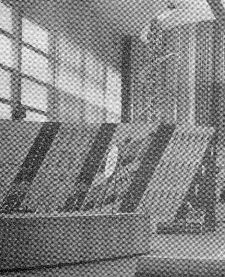 balletic image of the sport typical of the new generation of sports photography. The photograph in The Daily mirror is of a clothed female tennis player and since it is unlikely that nude tennis was actually practiced it therefore represents a male fantasy, the logical outcome of the continuing shift towards less and less restrictive clothing on court and an interesting new domain in which to study the human form.”
balletic image of the sport typical of the new generation of sports photography. The photograph in The Daily mirror is of a clothed female tennis player and since it is unlikely that nude tennis was actually practiced it therefore represents a male fantasy, the logical outcome of the continuing shift towards less and less restrictive clothing on court and an interesting new domain in which to study the human form.”
Moving on from the male-inspired fantasy, it was good to find out that Oliver Hill’s (yes, the triumvirate is complete) favourite sport was tennis. That snippet of information comes from Hill’s involvement in the Paris Exposition of 1937 mentioned in the first paragraph. It was for this very exhibition that Ravilious created his contribution to the Barber Institutes Tennis Exhibition. The rather pompously entitled “Preparatory Design on a Grand Theme for ‘Sport’, for the British Pavilion of the Paris International Exhibition of 1937” is a 1937 watercolour on paper owned privately and very difficult to source any decent images (although I have reproduced the available image from the book 'Court on Canvas' above). Once again the exhibition provided more information about the item on display : “Ravilious originally suggested that football and cricket be included in the plans for his stand in the sports section of the British pavilion, but Oliver Hill, the overall organiser was keen that he should concentrate on his favourite sport, tennis. This watercolour shows Ravilious’s first thoughts. In the next stage, the artist made four plywood cut out figures convincingly poised for play in front of a background of spectators in stands. A grass roller was shown on a large scale above with giant tennis rackets below.
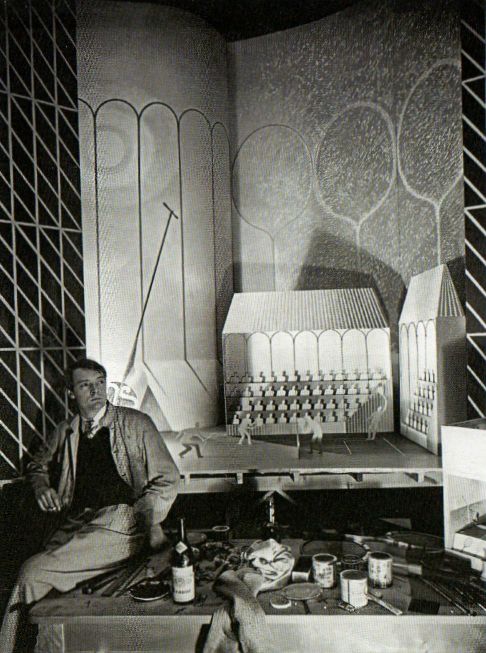
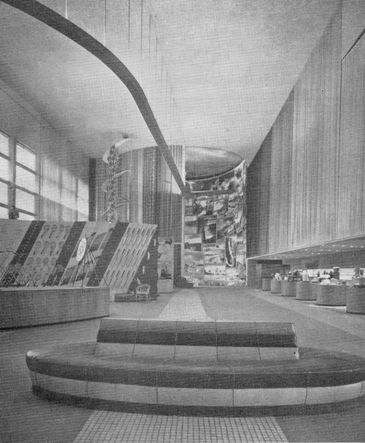
On the left the Norman Parkinson (ref: Fig. 1.17) portrait as described below and an overview of the Pavilion with the Sports section on the left of the picture (detail enlarged above).
A photograph taken by Norman Parkinson and entitled “Eric Ravilious Preparing his Tennis Model for the Sports Section of the British Pavilion at the International Exhibition of Arts and Crafts in Modern Life, Paris 1937” - original sepia photograph in a private collection, also has its place in this exhibition. Additional information tells us that “this stylish photograph of Ravilious, perched on a work table in the British Pavilion at the Paris International Exhibition, shows him as he prepares his Tennis model. The organising committee had decided to highlight English words which had entered the French language such as ‘le tennis’, ‘le week-end’, ‘le picnic’, producing a particularly nostalgic view of Britain. The tennis rackets, however, loom above with surreal effect. A photograph of the finished model (original destroyed) shows how much more work he still had to do.”
On further researching Ravilious’ ‘tennis art’ I found that there are many and varied examples and styles which surprised me to a degree as, again, I had always assumed that the Ravilious style was that which was evident in the original ‘Rotunda’ bar at the Midland Hotel.
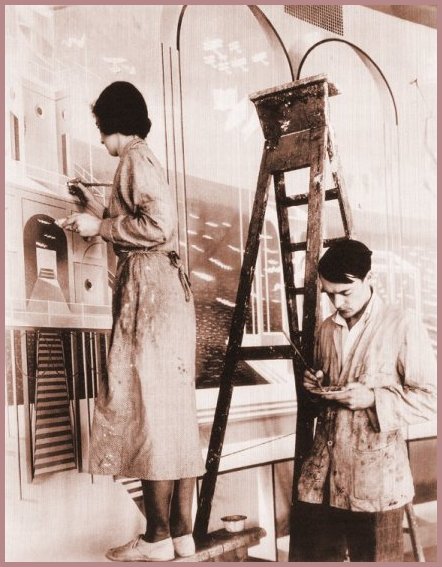
Tirzah Garwood and Eric Ravilious
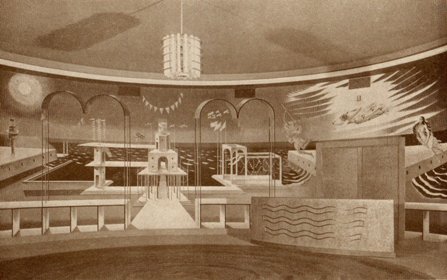

Iconic images that will be familiar to aficionados of the Midland Hotel and its illustrious history - two examples of the mural painted by Eric Ravilious and his wife, Tirzah Garwood - the image on the left is entitled 'Noon' and on the right 'Night' - these are photographs of the original murals which had to be reproduced for the Poirot episode 'Double Sin' as by that time they had suffered severe damage.
Three scenes from 'Double Sin' which starred David Suchet as Poirot, as Hugh Fraser as Hastings, Michael J. Shannon as Mr. Baker Wood, Elspet Gray as Miss Penn, Caroline Milmo as Mary Durant and Anne Small as the Pianist
The top image was used without credit by the Lancashire and North West Magazine (reproduced)
Restitution!
Ravilious and Tennis Art
Eric Ravilious (1903-1942) Three Vignettes from 'Thrice Welcome' Wood engravings, published by Merivale Editions, 1935, edition of 500, on a single sheet Each 38 x 70mm.
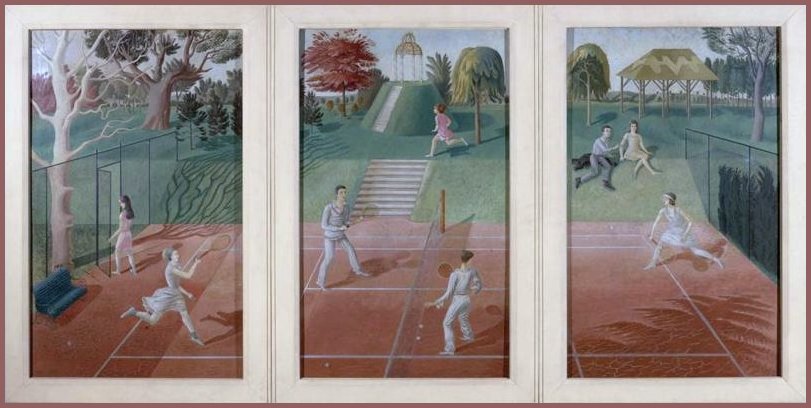
'Tennis in the Park' - 1930 oil on board housed in the Bristol City Museum and Art Gallery.
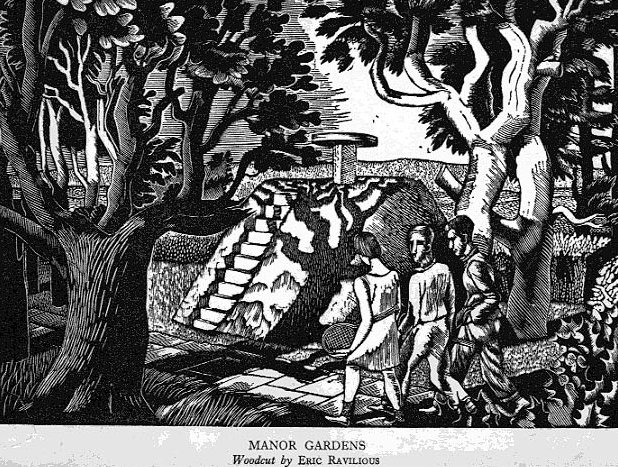
An interesting biography of Eric Ravilious as found in the Exhibition catalogue and a list of exhibits of his work.
It has proved difficult to source 'May' from 'The Twelve Months' and September 1933 from the Monotype Corporation Calendar but the cover from the MCC calendar and the month of August shown below give an even greater insight into the varying and versatile styles that Ravilious produced.
The cover of the 1933 Monotype Corporation Calendar and the month of August 1933
Before embarking onto the Art Deco aspects of the Triumvirate’s Pavilion I should like to add this paragraph from the book of the exhibition which links Ravilious, tennis and the Paris Expo of 1937 and which is causing me the dilemma of where to place this article on my web-site. (It gets more difficult to resolve the more I write.)
“It was Ravilious who contributed a model entitled ‘Lawn Tennis’ to the International Exhibition of Arts and Crafts in Modern Life (Exposition Internationale des Arts et Techniques dans la Vie Moderne) in Paris in 1937, now known only from photographs. Tennis was at the peak of its popularity and Britain chose to use the game to project a comforting national image. This was the year after Fred Perry had won Wimbledon for a third time, that Dorothy Round won for a second time and British players male and female still dominated the game. It was the year that Suzanne Lenglen collaborated with the Scottish dancer and choreographer Margaret Morris on their extraordinary book ‘Tennis by Simple Exercises’, and when Noel Streatfields’s timeless children’s novel ‘Tennis Shoes’ was published, encouraging young girls to dream of winning their local tournaments. This was a Britain where tennis was popular beyond the upper and middle strata of society, with thousands queuing outside Wimbledon to stand on Centre Court ,,, Tennis was even played for pleasure and competitively by the Cadbury workers on courts provided for them at Bourneville in Birmingham and Workers Wimbledon tournaments were held from 1933 onwards at Reading Lawn Tennis Club. British Success ensured that tennis was reported widely in the press, illustrated with compelling action shots and increasingly covered by radio.” (Narrative ref: page 26)
Gills' Tennis Alpha-Graphics
Not to be outdone, and adding his favourite preoccupation of the nude body here is an example of Gill's illustrations of fonts where the letter T is without doubt, totally dedicated to the sport of tennis! Image is sourced from a book stamped Rotherham Public Library.
More Tennis Art
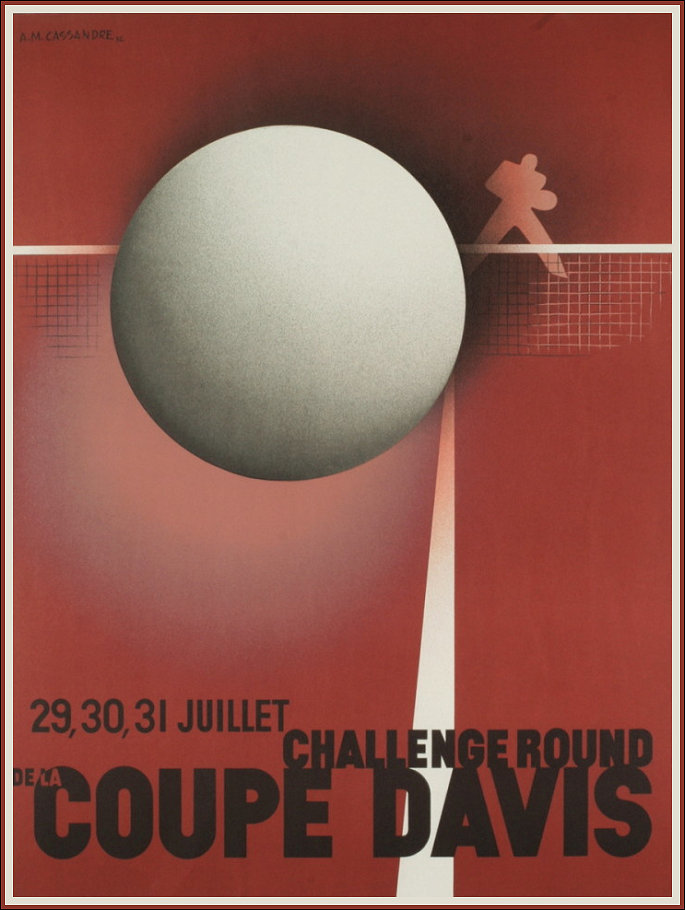
A 1932 poster (originally published by Alliance Graphique, Paris France, 1932. Published as 'Grand Quinzaine Internationale De Lawn-Tennis') for the Davis Cup Challenge Round played on 29th - 31st July in 1932 by A.M. Cassandre (1901-1968) probably better known for his imposing poster of the 'Normandie' and many 'Dubonnet' adverts - this unusual image sourced with thanks from kingandmacgaw.com
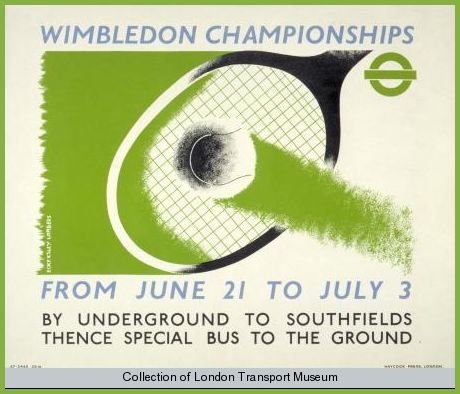
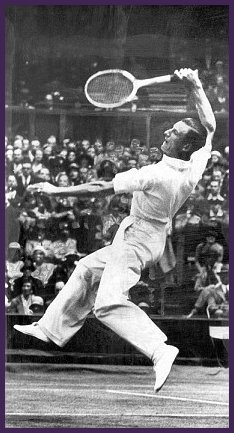
The 1937 Poster (courtesy of the London Transport Museum) promoting the spectacularly popular tennis tournament held annually at the AELTC and known simply as ' the Wimbledon Championships'.
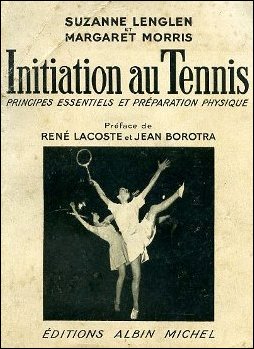
Left and right are images of the 1st edition of Tennis Shoes by Noel Stretfeild, illustrated by Richard Floethe and the centre image is the collaborative book by Tennis Legend Suzanne Lenglen and Scotland's avant garde dancer Margaret Morris.
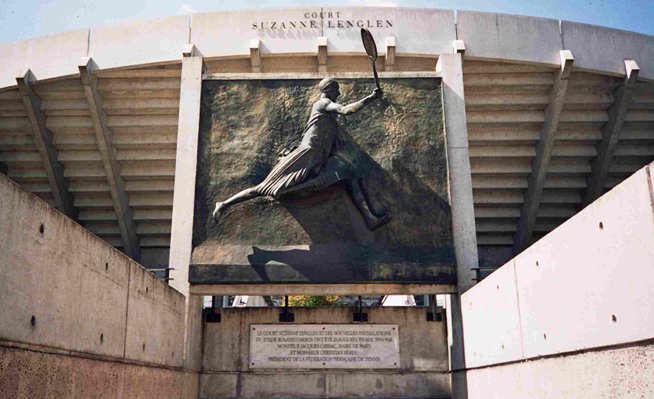
The entrance to Court Suzanne Lenglen at Roland Garros in Paris
Having now discovered that Margaret Morris was the Scottish ‘Isadora Duncan’ this particular article now also interweaves with another of my interests which is ‘Dance’ in most forms including ballet and stage musicals. I was fascinated to see that Noel Streatfield had written a novel entitled 'Tennis Shoes’ which will always have been overshadowed by her popular novel ‘Ballet Shoes’ which of course I read as a child (anything to do with ballet – especially the “Secret Ballet School” in the ‘Judy’ comics). I’ve managed to source one version of a first edition but am not sure if it is the British version or one for the overseas English-speaking market. It is trickier to find a copy of the Margaret Morris and Suzanne Lenglen collaboration in English but I have sourced a French copy to give an indication of how the books would have looked at the time. There was just the one print in 1937 as far as I can find out.
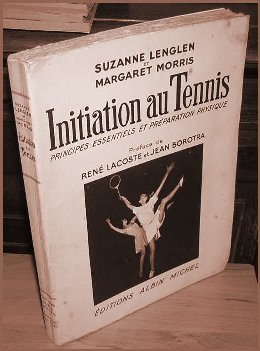
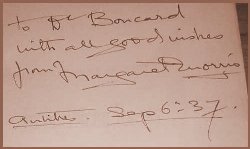
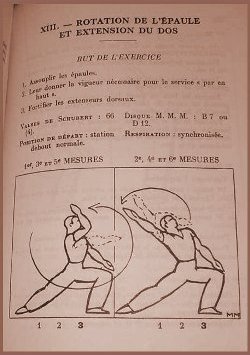
The French version (with forewords by two of the four Musketeers, René Lacoste and Jean Borotra) of the collaborative book by Suzanne Lenglen and Margaret Morris - featuring left to right, the cover, the inscription made in 1937 by Margaret Morris and one of the illustrated exercise pages.
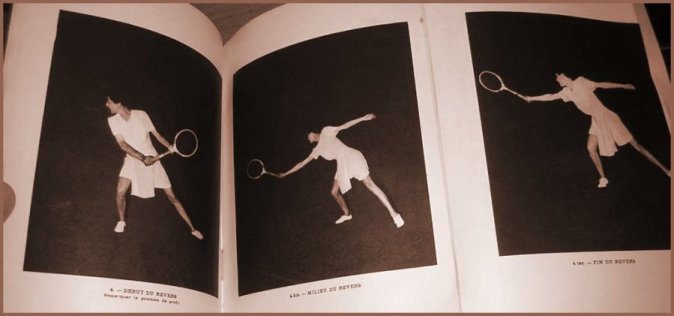
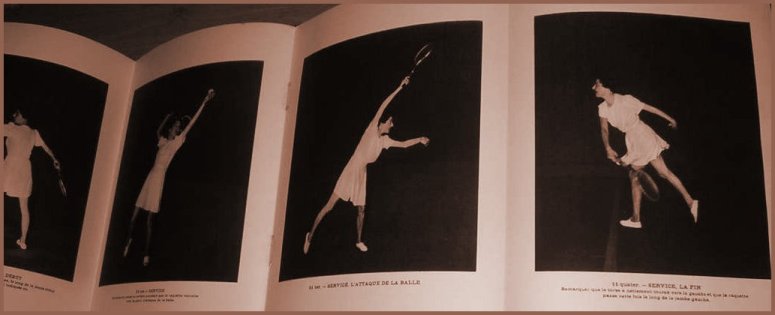
Two pages of 'action shots' from the book.
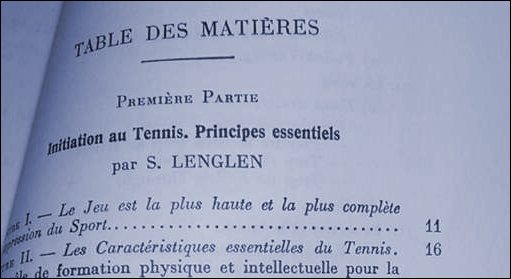
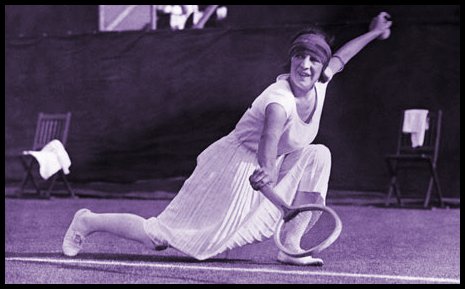

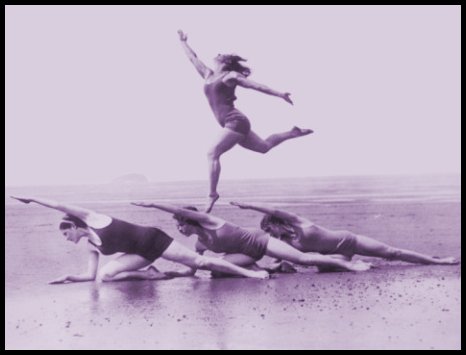
A true collaboration - part one attributed to Suzanne Lenglen and part two to Margaret Morris - 1937 and the athleticism of the tennis and the beauty of the dance mirror each other to produce a whole.
In 2010 ‘Stirling in Scotland City News’ dedicated an exhibition to the art of dancing as created by Margaret Morrison.
Stirling celebrates Margaret Morris with new exhibition
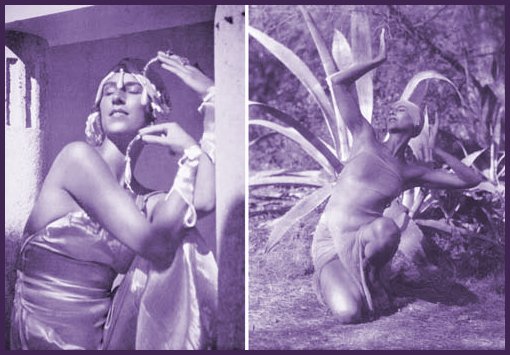
Margaret Morris, 1920s and MMM dancer.
Photos by Fred Daniels. Copyright The International Association of Margaret Morris Movement.
"An entrancing new photography exhibition opens this weekend at the University of Stirling to celebrate Margaret Morris Movement. One hundred years ago, Margaret Morris developed her own system of dance and movement training which she called Margaret Morris Movement (MMM). She also opened her own dance school to train dancers in MMM, which became a worldwide organisation.
While visiting France with a dance troupe in 1913 she met the Scottish artist J D Fergusson, who was studying painting in Paris. They lived together for the next 47 years encouraging each other’s creative endeavours and J D Fergusson became the Art Director of all her MMM Schools. Painting and design became an integral part of the students’ curriculum which already included acting, dance composition and improvisation, normal educational subjects and her system of Dance Notation. After J D Fergusson died in 1961 in Glasgow, Margaret Morris lived on in their flat and continued to inspire others with her creative energy.
Jane Cameron, collections curator at the University of Stirling, explained the local link: “She was known to Tom Cottrell, first Principal of Stirling University, and because of their friendship and her excitement at the founding of a new university in Scotland, she presented us with 14 of J D Fergusson’s paintings, which had been stored in their flat overlooking the River Kelvin. “These paintings were personally selected by Margaret Morris and she visited when they were delivered and hung on the walls. They are now on permanent display here in the newly ‘listed’ Pathfoot Building.”
This new exhibition to complement the Fergusson paintings has been created as the Fergusson Gallery in Perth, home to the J D Fergusson collection, has this year been given the entire Margaret Morris Archive and they are celebrating the event with an exhibition ‘Dancing as an Art - 100 years of Margaret Morris Movement’.
“Here at Stirling we are marking the event with a superb exhibition of black and white photographs of the dancers by Fred Daniels, on display in the Pathfoot Crush Hall,” Jane said. “The University of Stirling owes Margaret Morris a debt of gratitude, as staff and students continue to enjoy the work of one of the great Scottish Colourists.”
The exhibition of photographs by Fred Daniels celebrating Margaret Morris Movement is on view at the University of Stirling, Pathfoot Crush Hall, 13 February to 14 May 2010. Admission to view the exhibition, and the art collection, is free.
Dancing as an Art - 100 years of Margaret Morris Movement 1910-2010 is showing at the Fergusson Gallery, Perth, 13 February 2010 to 12 February 2011."
The International Paris Exhibition of 1937
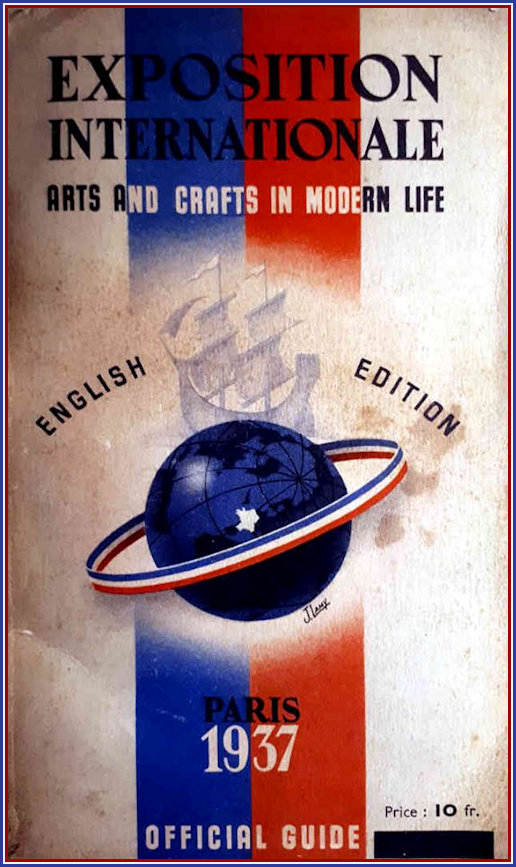
The Official British Guide - image sourced from worldfairs.info with thanks
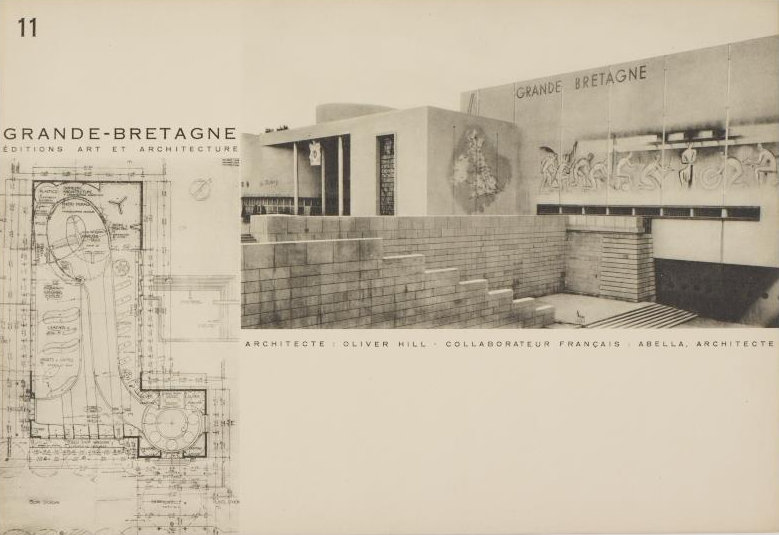
The British Pavilion - image courtesy of Derek Pullen via Fb - the full catalogue .pdf file can be found here
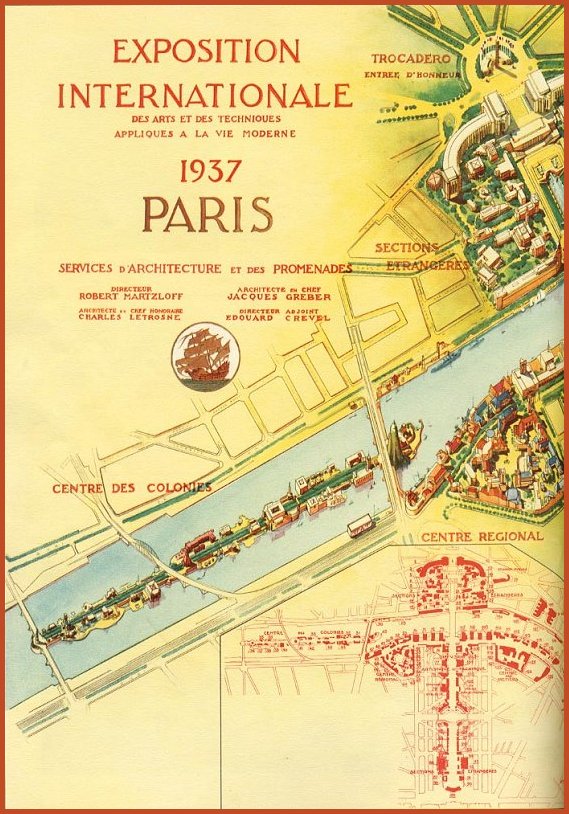
Not from the 'Court on Canvas' Exhibition of tennis art, but a cautionary statement nevertheless: “Britain distanced herself from the more propagandist outlook of a number of countries through the displays in her moderne British Pavilion designed by Oliver Hill. The exhibits, selected by the Council for Art and Industry, had a strong commitment to a British way of life with a considerable emphasis on sporting traditions and ‘fair play’. There was an impressive display of equipment for a wide range of sports including tennis, cricket, golf, fishing, and football. “ This statement rather emphasizes that the year is 1937 and war clouds are looming over Europe not to mention the coming Abdication of Edward VIII for the love of Mrs. Simpson. It is interesting to note that Picasso’s ‘Guernica’ was the centrepiece of the Spanish Pavilion hence the reference to Britain distancing herself from the ‘more propagandist outlook.’

And so to the British Pavilion at the International Exhibition of Arts and Crafts in Modern Life, Paris 1937 which merits its own section in ‘The Architect and Building News’ dated 30th July 1936 the frontispiece of which is reproduced below. Anyone looking at the ‘view looking across the spiral ramp’ may well believe that they are looking down on the floor below them from the stairwell at the Midland Hotel.
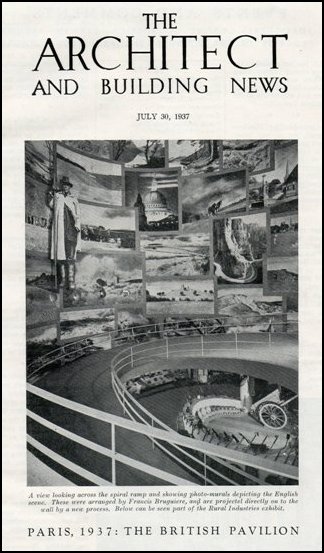
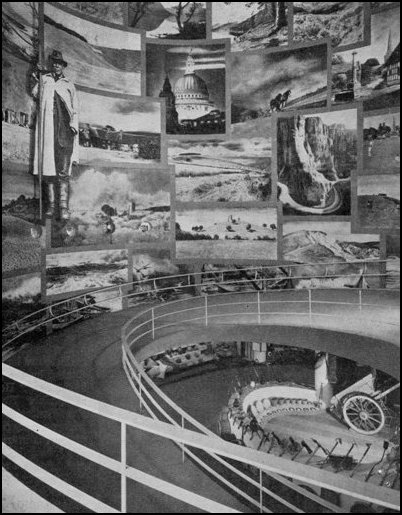
As you can see there is little to differentiate the Pavilion of 1937 and the stairwell at the Midland Hotel in the 21st century as modelled by: Manager of the Midland Hotel, Morecambe, Matt Stanaway and duty manager Lindsay Price and the DVD of an old cinefilm, and pictured right, showing Morecambe resort in its 1950s found at a car boot sale and now shown in guests rooms
Only Oliver Hill, as the architect, is cited in this article – although the Sports Pavilion quite obviously forms a greater part of the ground floor space.
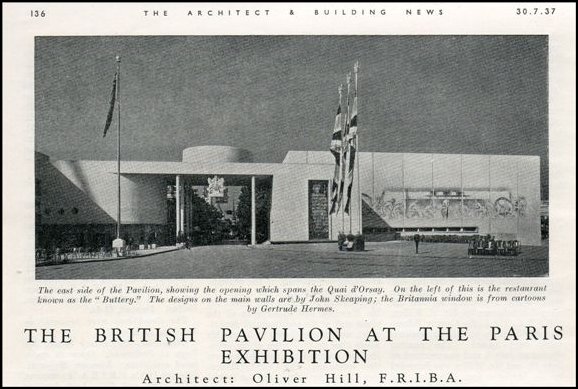
The British Pavilion at the 1937 Paris Expo citing Hill as the architect. - The designs on the main walls are by John Skeaping, the Britannia window by cartoons by Getrude Hermes.
Little mention is made of any contributors, probably quite correctly for the format of the publication. However, if I were to start reading an article today whose opening paragraph states “England cynically self-conscious in matters of design, expects every British Pavilion to be a flop …” I daresay I should not continue reading unless I was really interested in the subject – luckily I am so I persevered and eventually found something that was a little more positive “ … we fully endorse the use of Mr. Hill’s uncompromising ‘all-in’ method “ (a reference to one of the main ‘approaches’ to the design of pavilions – the other being ‘all-out’) and further into the article they pay tribute to Oliver Hill’s style (which will certainly be recognised by aficionados of the Midland Hotel) by saying “ The plan, with its harmonious sweep of curved lines within the simple rectangular shell, is fully characteristic of the architect. Curves on plan have always been Mr. Hill’s fortes.”
Having read the comments extolling the virtue of Hill’s curves and having already observed the similarities as shown on the frontispiece of the ‘Architect and Building News’ which resembles the Midland so closely, I thought I would have a further look and see if there was anything else that would bear comparison.
I found that the entrance hall at the Midland and the foyer of the pavilion echoed each other, especially the use of glass mosaics so beloved of Hill’s designs; as did the use of furniture in the living and dining areas and the sweep of the general space housing the design concept as a whole – these are illustrated below from original sources.
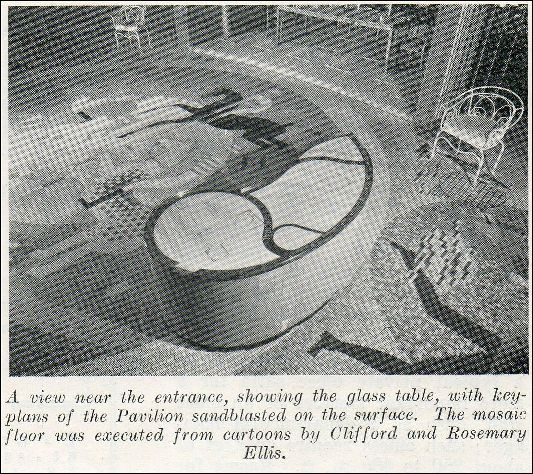
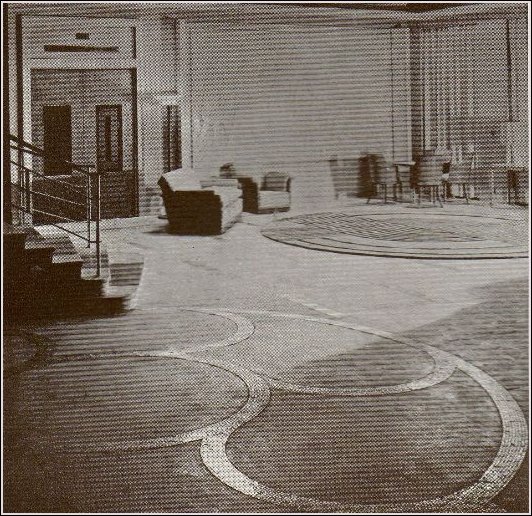
At the Midland Hotel in Morecambe, four years earlier, from the Architecture Illustrated of that same year 1933 the description reads 'Detail of Hall floor showing inlaid silver mosaic bands.'
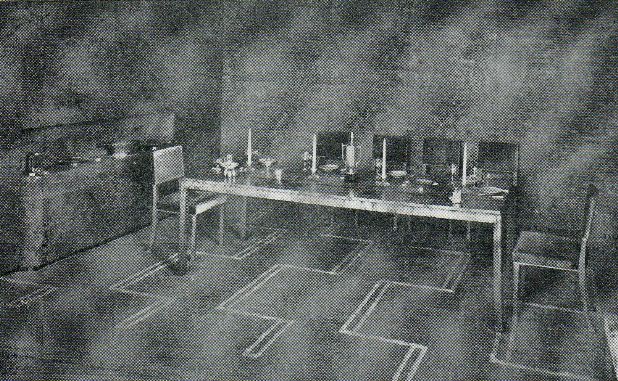
The Dining Room, opposite the main entrance, designed by Oliver Hill. The veneer used for the walls is British Columbian maple, while the table and chairs are in old English Yew.
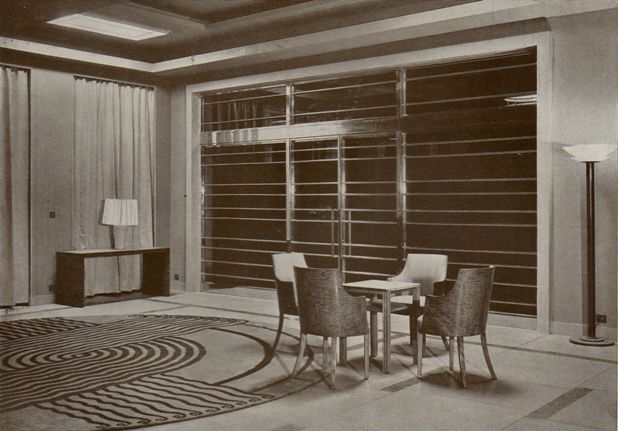
The Living area (North Hall) at the Midland in 1933 shows patterns on which are echoed in the Dining Room at the Expo in Paris - the furniture, in the main, was beige coloured maple burr - even the materials used were from the same genus..
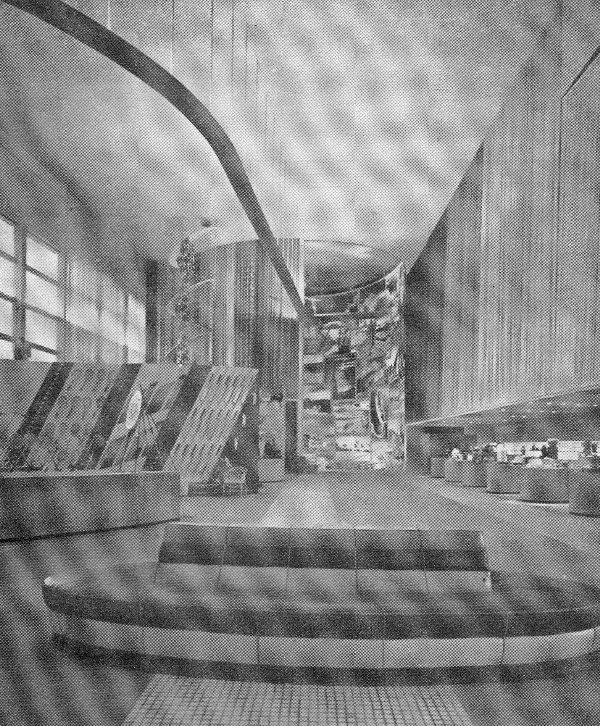
Looking down the main exhibition hall from near the entrance. On the left are the sports exhibits, while at the far end is the ellipse containing the ramp down to the lower storey.
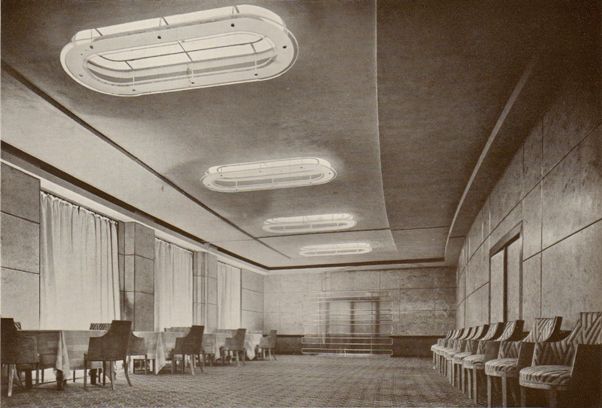
If you imagine viewing this Dining Room at the Midland Hotel from the 'grill' end - you would see another 'ellipse' which would have been formed by the grand stairwell that is such a feature of Oliver Hill's design in the foyer.
Back to Top / Back to Tit Bits
Book Provenances : "Tennis Shoes" was first published in 1937 by J. M. Dent & Sons, with illustrations by D. L. Mays.
"Tennis by Simple Exercises" published by William Heinemann Ltd 1937.
"Initiation au Tennis" published by Edition Albin Michel in 1937.
"Court on Canvas" - Gill - Fig. 4.31 – page 113
"Court on Canvas" - Ravilious - Fig. 4.29 – page 111
"Court on Canvas" - Ravilious - Fig. 1.17 – page 27
"Court on Canvas" - Expo Narrative – page 26
Back to Top / Back to Tit Bits
Page refreshed : 6th August 2021 (G)
